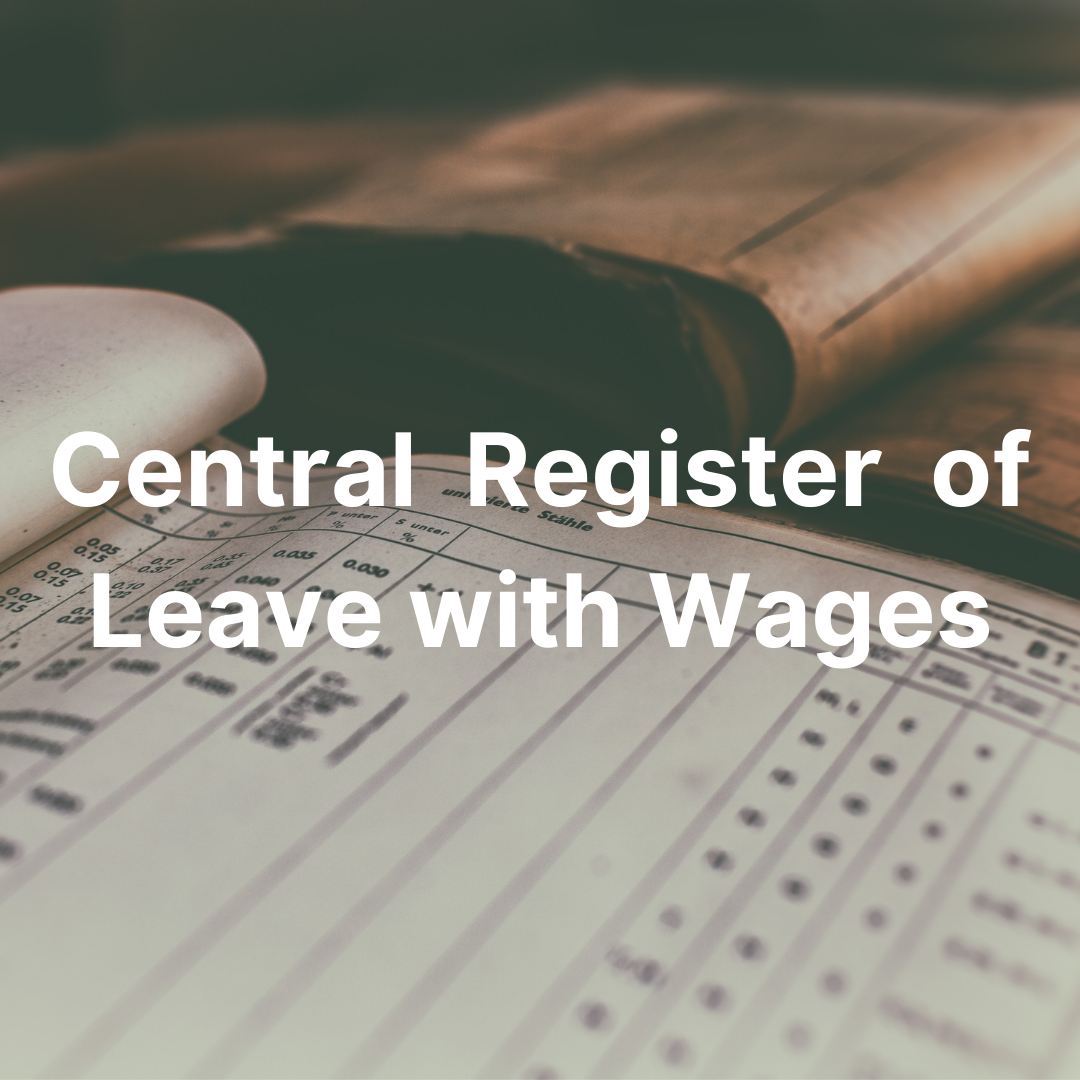Are you looking forward to something which will keep a record of your workers leaves? Well, according to Form-21 the manager shall provide each worker who has become entitled to leave during a calendar year, a Leave book.

This article will serve as a guide to Central Leave Book Form-21. We will be covering the following topics:
The Factories Act,1948
In India, large-scale industry and factories have grown in the second half of the nineteenth century. Major Moore, Inspector-in-Chief of the Bombay Cotton Department, first posed the topic of the need for legislation to control the working conditions in factories in his report from 1872–1873; the first Factories Act was passed in 1881.
Numerous changes have been made to the statute since then. All previous legislation pertaining to factories was repealed by the 1934 Factories Act. The Royal Commission on Labour's suggestions were taken into consideration when this legislation was being written. This Act has also occasionally undergone appropriate amendments.
The Factories Act of 1934 had a number of flaws and weaknesses that made it difficult to administer it effectively, and it was considered that the act needed to be completely revised to extend its protective measures to the vast majority of smaller industrial firms.
As a result, on August 28, 1948, the Constituent Assembly passed the Factories Act, 1948, combining and modifying the law relating to labour in factories. The Act was approved by the Governor General of India on September 23, 1948, and it became operative on April 1, 1949.
Objective of Factories Act ,1948
The Indian Factories Act of 1948 aims to control working conditions in factories, as well as health, safety, and welfare issues. It also establishes particular protections for young people, women, and children who work in factories.
1.Working Hours: No adult worker must be compelled or permitted to work in a factory for more than 48 hours in a week, as per the regulations governing adult workers' working hours. There ought to be a holiday every week.
2.Health: The Act stipulates that every plant will be kept clean and that all essential precautions shall be taken in this regard to preserve the health of workers. The factory should have a suitable drainage system, enough lighting, ventilation, and temperature, among other things.
Water should be provided in a suitable manner. There should be enough restrooms and urinals available in handy locations. These must be kept clean and freely accessible to employees.
3. Safety: The Act mandates that all dangerous machinery be walled off, that no young person under the age of 18 be allowed to operate, and that adequate-sized manholes be installed in tight locations so that workers can escape in an emergency.
4. Worker welfare: The Act mandates that appropriate and suitable facilities for washing should be supplied and maintained for use by employees in every factory.
There should be places to sit, first aid supplies, garment storage and drying facilities, shelters, restrooms, lunch rooms, and crèches.
5. Penalties:- Violations of The Factories Act, 1948 regulations, rules enacted under the Act, or written orders issued under the Act are treated as offences. Penalties include the following:-
(a) A sentence of imprisonment that may last up to one year;
b) a fine that may amount to one lakh rupees; or
c) both a fine and incarceration.
A penalty of Rs. 500 may be imposed on a worker who misuses a device connected to the welfare, safety, and health of workers or the performance of his duties.
Applicability of Factories Act, 1948
The Act is applicable to any factory where ten or more employees are working, or were working, on any day during the previous 12 months, and in any part of the factory where a manufacturing process is being carried out with the aid of power, or is ordinarily carried out in that manner, or where twenty or more employees are working, or were working, during the previous 12 months, and in any part of the factory where a manufacturing process is being carried out without the aid of power, or is ordinarily carried out in that manner but this does not include a mine, or a mobile unit belonging to the armed forces of the union, a railway running shed or a hotel, restaurant or eating place.
Importance of Factories Act, 1948
The 1948 Factories Act is a useful piece of legislation. The Act's primary goals are to protect the rights of workers, put an end to their exploitation, and ensure their welfare, safety, and hygienic conditions at work. It imposes a number of requirements, duties, and responsibilities on both the factory management and the occupant of the plant. The nature and breadth of the idea of occupier have been significantly expanded as a result of Act amendments and judicial rulings, particularly with regard to dangerous factory procedures.
Leave Book Form-21
Each employee who has earned the right to leave during a calendar year must get a leave book in the prescribed format from the manager by January 31 of the following year. The employee's property is the leave book.
The management is required to provide an abstract from Form 20 within a week of the date of discharge or dismissal when a worker is let go from their position during the course of the year.
ANNUAL LEAVE WITH WAGES
Application of Chapter
(1) No right to which a worker may be entitled under any other law or under the conditions of any award, [agreement (including settlement)] or contract of service shall be adversely affected by the provisions of this Chapter:
Provided that if such award, agreement (including settlement) or contract of service provides for a longer annual leave with wages than provided in this Chapter, the quota of leave to which the employee shall be entitled shall be in accordance with such award, agreement or contract of service; however, in relation to matters not provided for in such award, agreement or contract of service or matters which are provided for less favorably therein, the provisions of sections 79 to 82, so far as may be, shall apply.
(2) Workers [in any factory] of any railway administered by the Government who are subject to leave rules established by the Central Government are exempt from the restrictions of this Chapter.
Annual leave with wages
(1) Every employee who has worked 240 or more days in a factory during a calendar year is entitled to paid leave for a specified number of days during the following year, calculated at the rate of
(i) one day for every twenty days of work performed by an adult;
(ii) one day for every fifteen days of work performed by a child during the previous calendar year.
Explanation
1.—For the purpose of this sub-section—
(a) any days off that are permitted by contract, agreement, or standing rules;
(b) maternity leave for a woman employees for any number of days up to twelve weeks; and
(c) For the purpose of calculating the period of 240 days or more, the leave earned in the year before to that in which the leave is taken shall be assumed to be days on which the worker has worked in a factory; however, he shall not earn leave for these days.
2.— Holidays that fall within the scope of the leave period or those that fall at either end must not be included in the leave period permissible under this subsection.
(2) A worker whose employment begins on a date other than January 1 is entitled to leave with wages at the rate specified in condition
(i) or, as the case may be, clause
(ii) if he has worked for two-thirds of the remaining days in the calendar year, of sub-section (1).
(3) During the course of the calendar year, if a worker is discharged or dismissed from service, resigns from his job, retires, or passes away while still employed, he or his heir or nominee, as the case may be, shall be entitled to wages in lieu of the amount of leave to which he was immediately entitled, calculated at the rates specified in sub-section (1), even if he had not worked for the employer for the entire period specified in sub-section (1) or sub-section (2) making him eligible to avail of such leave, and such payment shall be made—
(i) Where a worker is superannuated or dies while in service, before the expiry of two months from the date of such superannuation or death; and
(ii) Where a worker is discharged, dismissed, or quits employment, before the expiry of the second working day from the date of such discharge, dismissal, or quitting.
(4) A percentage of leave that is half a day or more counts as one full day of leave when calculating leave under this section, while a fraction of less than half a day is ignored.
(5) If a worker does not use all of the leave that is granted to him under subsection (1) or subsection (2), as applicable, in any calendar year, any unused leave will be added to the leave that will be granted to him in the next calendar year:
With the caveat that the total number of days of leave that may be carried over to a future year cannot be greater than thirty for adults and forty for children:
Furthermore, a worker who has requested paid vacation but has not received it in accordance with any of the plans outlined in subsections (8) and (9) [or in violation of subsection (10)] is entitled to carry over the [leave denied] without any restrictions.
(6) A worker may at any time apply in writing to the management of a factory not less than fifteen days before the date on which he intends his leave to begin, in order to take all of his permissible leave or any portion of it:
As long as the worker is working in a public utility service as specified in clause (ii) of section 2 of the Industrial Disputes Act, the application must be submitted no later than thirty days before the date on which the worker intends his leave to begin. 1947 (14 of 1947): Furthermore, the maximum number of times a year that a leave of absence may be taken is three.
(7) Even if the application for leave is not made within the time frame specified in subsection (6), a worker who wishes to take advantage of the leave with wages due to him to cover a period of illness will still be granted that leave. In this case, wages admissible under section 81 will be paid no later than fifteen days or, in the case of a public utility service, no later than thirty days from the date of the leave application.
(8) The occupier or manager of the factory may file a complaint with the Chief Industrial Officer in accordance with the Works Committee of the factory established under section 3 of the Industrial Disputes Act, 1947 (14 of 1947), or a similar Committee established under any other Act, or, if there is no such Works Committee or similar Committee in the factory, in accordance with the representatives of the workers therein chosen in the prescribed manner.
(9) The manager, in consultation with the Works Committee or a similar Committee, or as the case may be, in consultation with the representatives of the workers as specified in subparagraph(8), may decide to renew the scheme with or without modifications for additional periods of twelve months at a time. The scheme must be displayed in some conspicuous and convenient locations throughout the factory and shall be in effect for a period of twelve months from the date it comes into effect.
(10) An application for leave that complies with subsection (6)'s provisions cannot be denied unless it does so in accordance with the arrangement already in place under subsections (8) and (9).
(11) The occupier of the factory is required to pay a worker who is entitled to leave under subsection (1) or subsection (2), as the case may be, the amount due under section 80 for the leave that has not been taken if the worker's employment is terminated by the occupier before he has taken the full amount of leave to which he is entitled, or if the worker leaves his employment before the expiry of the second working day after such termination, and where a worker who quits his employment, on or before the next pay day.
(12) When calculating the length of any notice that must be given prior to discharge or dismissal, a worker's unused leave cannot be taken into account.
Wages during a leave of absence
(1) A worker [shall be entitled to wages] at a rate equal to the daily average of his total full-time earnings for the days on which [he actually worked] during the month immediately preceding his leave, exclusive of any overtime and bonus but inclusive of dearness allowance and the cash equivalent of the advantage accruing through the concessional sale to the worker of food grains and other necessities. This wage is paid for the leave permitted to him under 1 [section 78 or section 79, as the case may be].
With the caveat that, in the case of a worker who did not work on any day during the month immediately preceding his leave, he shall be paid at a rate equal to the daily average of his total full-time earnings for the days in that month that he actually worked, excluding any overtime and bonuses but including dearness allowance and the cash equivalent of the advantage accruing through the concessional sale to the workers of food grains and other articles.
The financial equivalent of the benefit received from the worker's access to food grains and other items at a reduced price shall be calculated as frequently as may be required, based on the maximum amount of food grains and other items permitted for a normal family.
Explanation
1.—A "standard family" is a household that includes a worker, his or her spouse, and two children under the age of fourteen. This household must have access to all three adult consumption units.
2.— "Adult consumption unit" refers to a male's consumption unit over the age of fourteen; a female's consumption unit over the age of fourteen and a child's consumption unit under the age of fourteen are computed at rates of eight and six, respectively, of one adult consumption unit.
(3) The State Government may make rules prescribing—
(a) the method for calculating the cash equivalent of the benefit received via the discounted sale of food grains and other items to a worker; and
(b) the registers that must be kept at a factory in order to ensure compliance with the requirements of this section. 81. In some circumstances, payment in advance— A worker who has been granted leave must be given the pay due for the whole term of leave before it starts, which is at least four days for adults and five days for children.
Mode of recovery of unpaid wages
The terms of the Payment of Wages Act of 1936 apply to any amount that an employer is required to pay under his Chapter but fails to do so (4 of 1936).
Power to make rules
The State Government may enact regulations requiring managers of industries to maintain registers including any prescribed information and making the registers available for inspection by inspectors.
Power to exempt factories
The factory may be exempted from all or some of the provisions of this Chapter under the conditions that may be specified in the order when the State Government is satisfied that the leave rules applicable to workers in a factory provide benefits that, in its opinion, are not less favorable than those for which this Chapter makes provision.]
Explanation.—For the purposes of this section, the entirety of the benefits shall be taken into account in determining whether or not the benefits offered by any leave rules are less favorable than those for which this Chapter makes provision.
Form 21
Prescribed under Rule 113(1)
LEAVE BOOK
Factory : Name of worker :
Department : Father’s name :
Note: The leave book shall be made out separately for each worker on thick bound sheets.
How Deskera Can help You?
Deskera People provides all the employee's essential information at a glance with the employee grid. With sorting options embedded in each column of the grid, it is easier to get the information you want.

In addition to a powerful HRMS, Deskera offers integrated Accounting, CRM & HR Software for driving business growth.
To learn more about Deskera and how it works, take a look at this quick demo:
Key takeaways
- Any factory worker who violates any sections of this Act or any rules or orders issued thereunder imposing any obligation or liability on workers is subject to punishment, up to and including a fine of 500 rupees, subject to the terms of section 111.
- The word "Factory" was expanded to include all industrial establishments with ten or more employees where power was employed and with twenty or more employees in all other situations.
- The Act gives the state government the authority to establish regulations governing overtime hours of employment. However, for a quarter, the total amount of overtime cannot exceed 50 hours. This cap is increased by the Bill to 100 hours. The central government may also impose rules in this regard.
Related articles














